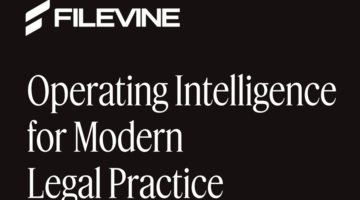 Consider the Honey Badger. Long ago, in the ancient days of yore, circa 2011 or thereabouts, a visionary by the name of Christopher Gordon saw a badger-sized hole in the emergent world of online video. To fill this gap, Gordon created a series of YouTube videos following the exploits of the baddest badger in the land. His first video, titled “The Crazy Nastyass Honey Badger (original narration by Randall)” was uploaded to YouTube and, as these things happen, soon became a viral sensation the world over.
Consider the Honey Badger. Long ago, in the ancient days of yore, circa 2011 or thereabouts, a visionary by the name of Christopher Gordon saw a badger-sized hole in the emergent world of online video. To fill this gap, Gordon created a series of YouTube videos following the exploits of the baddest badger in the land. His first video, titled “The Crazy Nastyass Honey Badger (original narration by Randall)” was uploaded to YouTube and, as these things happen, soon became a viral sensation the world over.
His video depicted the titular badger doing normal badger stuff, like eating a snake, while a sassy voice-over described the action to hilarious effect. Tens of millions of people viewed the video, which spawned follow-ups and two noteworthy catchphrases. The first, “Honey Badger Don’t Care,” and the second, the slightly more salty “Honey Badger Don’t Give a S—,” became well-known in certain corners of the internet, and eventually leached into the minds of the general populace. They also became valuable trademarks. There was no doubt that Gordon’s videos were some of the best badger-related content anywhere, and, where there is quality content, there are unscrupulous business folks looking to exploit the creativity and buzz generated by the creator.
Here, Drape Creative, Inc. and Papyrus-Recycled Greetings, Inc. were the ones looking to sweep some of those sweet badger bucks into their coffers, and weren’t above snookering poor Gordon in doing so. They marketed a series of greeting cards based around Honey Badger’s catchphrases and added little in the way of new creative material. Apparently, they added a hat here and a pumpkin there, but, viewing the cards objectively, it is hard to argue that any consumer purchased one of the disputed cards for any reason other than the draw of ol’ Honey Bae.

How Filevine’s New DraftAI Cuts Out Hours Of Writing Work
Now it transforms your document creation with natural language prompts.
To make matters worse, Gordon’s people (yes, badger-based celebrity is enough to garner people) had been in touch with Papyrus-Recycled’s parent company before the infringement to discuss a possible licensing deal. But, instead of reaching an agreement to compensate the creator, Papyrus took the less honorable path of simply exploiting the content without advising Gordon, most likely with the belief that Gordon would not notice the exploitation or have the funds or wherewithal to bring a lawsuit.
But, Gordon brought suit and the facts seemed to reflect a straightforward case in which the creator should be compensated. But, no dice, at least initially. The defendants prevailed at the summary judgment stage under the Rogers test, derived from the Second Circuit’s decision in Rogers v. Grimaldi, 875 F.2d 994 (2d Cir. 1989), which seeks to “strike an appropriate balance between First Amendment interests in protecting artistic expression and the Lanham Act’s purposes to secure trademarks rights.” The District Court found that defendants’ use of Gordon’s trademarked content was protected free speech under Rogers and tossed the case.
This result wasn’t altogether surprising given the Ninth Circuit’s past application of the Rogers test. In five cases out of five, its decisions had tilted in favor of the First Amendment and the junior user of the content at issue. On appeal here, the Ninth Circuit walks us through a number of these cases — a record label named Empire that challenged use of its mark as the title of the TV series; Mattel’s objection to an artist putting Barbie in a blender in a series of imagery; a football player’s attempt to seek compensation for the use of his likeness in a video game — and then signals that Gordon’s case is different by emphasizing the disjunctive nature of the Rogers test, which requires proof that the use of the disputed mark is “either not artistically relevant to the underlying work” or was used in a way that “explicitly misleads consumers as to the source or content of the work.”
The Ninth Circuit reversed, finding that Gordon could prove to a jury that what happened was what happened: the greeting card companies had “merely appropriated the goodwill inhering in Gordon’s mark without adding any creativity of their own.” This conclusion does raise a corollary issue, viz., that there is some amount of creativity that would allow the companies to appropriate Gordon’s goodwill in his content. A balancing test of this sort may work with project titles, like in the Empire case, but it doesn’t work when you have a defendant that is selling products on the back of someone else’s creativity. In such cases, if you fancy someone else’s content and want to incorporate it into a line of product, you should be required to reach an agreement with the creator. And asking a jury to decide whether “defendants’ added their own artistic expression beyond that represented by the mark” is a tall order.

Transform Legal Reasoning Into Business-Ready Results With General AI
Protégé™ General AI is fundamentally changing how legal professionals use AI in their everyday practice.
As the Circuit notes, it may be the case that “defendants’ cards are only intelligible to readers familiar with Gordon’s video and deliberately trade on the goodwill associated with his brand.” But it remains unclear as to whether this deliberate trading on the goodwill of another could be excused given enough added creativity.
And the Circuit declines to address the second Rogers prong: whether the cards are misleading as to the source or content. This also would seem clear, particularly as to the “content,” as Gordon created an idiosyncratic character and set of catchphrases that tens of millions of people viewed and which were thereafter incorporated into a series of greeting cards. It seems implausible that anyone would think the “content” of the cards originated from anyone other than Gordon.
While the Ninth Circuit’s opinion would seem to tee this case up quite properly for a jury to find that neither of the Rogers prongs insulates the defendants here, there remains some ambiguity.
The Circuit notes that the jury must be instructed that defendants’ use “is explicitly misleading only if it explicitly misleads consumers into believing that Gordon sponsored or is somehow associated with defendants’ cards. Simply using the mark is not enough.There must be something else about the cards that explicitly misleads consumers into believing that Gordon sponsored or is associated with the cards.” It is unclear what could possibly be proffered to the jury to add this “something else” given the uncontroverted evidence of Gordon’s creation and popularization of his content and defendants’ clear exploitation of that content in the cards.
And the litigants will have to grapple with the somewhat circular definition of artistic relevance, as the Circuit find that “[t]he use of a mark is artistically relevant if the defendant uses it for artistic reasons.” Greeting cards can certainly be artistic, but a greeting card company should not be able to add some degree of ancillary “artistic” material to someone else’s creative content and thus avoid infringement liability.
These two issues may complicate the case as the parties gear up for trial, but, in toto, the opinion, which finally sets the outer limits of the Rogers test, is a positive development in this still turbid area of law. Perhaps the Honey Badger itself NOW will reappear, like his sworn enemy, the groundhog, to provide some insight into how much longer we will wait until the next Circuit decision arrives to provide further clarity.
 Scott Alan Burroughs, Esq. practices with Doniger / Burroughs, an art law firm based in Venice, California. He represents artists and content creators of all stripes and writes and speaks regularly on copyright issues. He can be reached at [email protected], and you can follow his law firm on Instagram: @veniceartlaw.
Scott Alan Burroughs, Esq. practices with Doniger / Burroughs, an art law firm based in Venice, California. He represents artists and content creators of all stripes and writes and speaks regularly on copyright issues. He can be reached at [email protected], and you can follow his law firm on Instagram: @veniceartlaw.